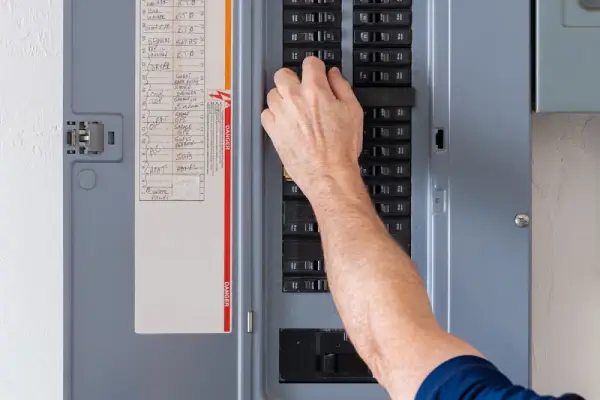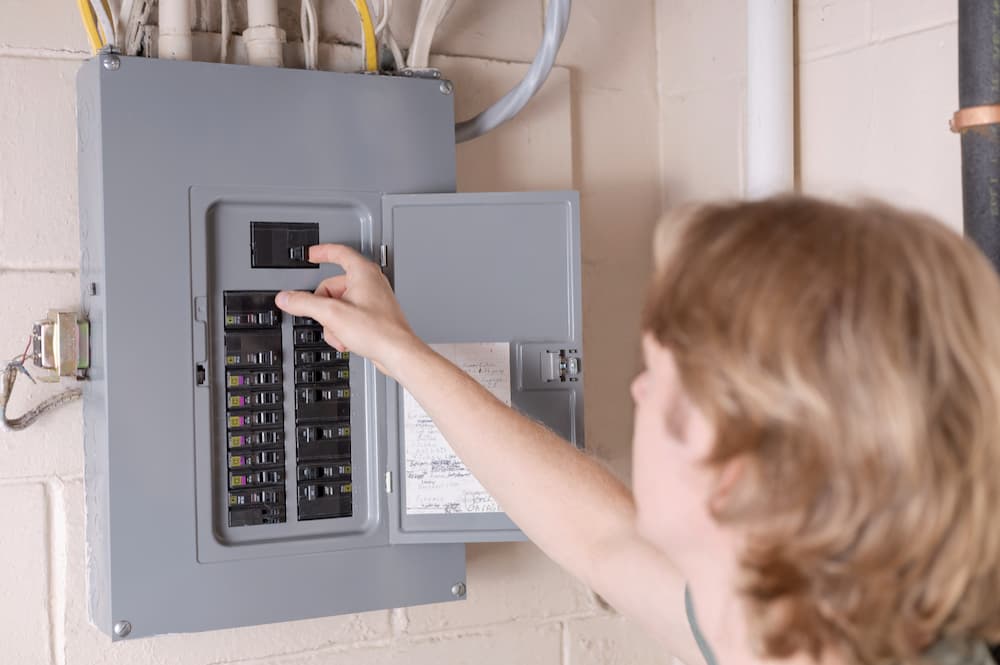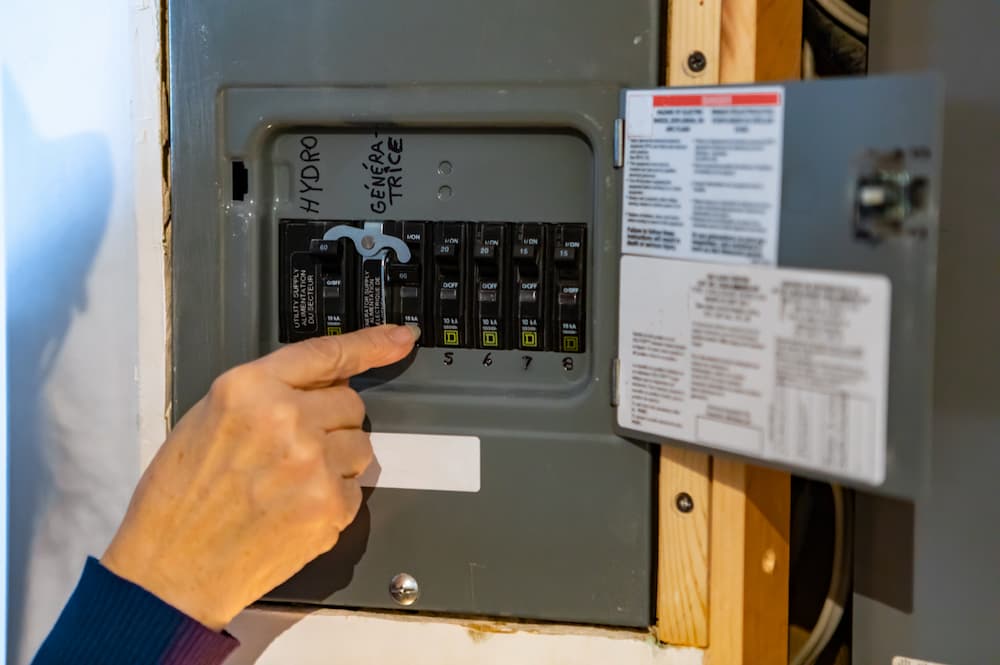
Mr. Electric explains how to safely understand and navigate your breaker panel.
|
Feeling intimidated by your breaker panel? Don’t worry, you’re not alone! That big gray box in your utility room may seem like a mystery, but with a little know-how, you can learn how to read and operate it. Your breaker panel controls the electrical distribution throughout your home, and understanding how it works can help you solve problems quickly and safely. Luckily, it’s not as complicated to understand and operate as you might think.
1. Understanding How Your Breaker Panel Works
At its core, a breaker panel is a large switchboard filled with smaller switches called circuit breakers. Think of it as the brain of your home’s electrical system. Just like flipping a light switch, each breaker controls the flow of electricity to different parts of your home. The beauty of breakers is that they not only control power but also protect your electrical system from overloads and electrical hazards such as shocks and fires.
2. Identifying the Main Breaker
The main breaker is the most important switch in your panel. It’s typically located at the top or bottom of the panel and acts as the on/off switch for your entire home’s electricity supply.
- Typical Amperage: Most homes have a 200-amp main breaker, though smaller homes may have 150 or 100 amps.
- Emergency Use: In case of an emergency, you can shut off power to the entire house by flipping the main breaker to the OFF position.

3. Understanding the Different Breakers in Your Panel
Your panel will likely contain a few different types of breakers, each serving a unique function.
Double-Pole Breakers
These breakers control large appliances such as stoves, dryers, and water heaters. They are usually rated for higher amperage, such as 30 or 40 amps, to handle the power requirements of these appliances.
Single-Pole Breakers
These are the standard breakers for most household devices and appliances. They typically handle 15 or 20 amps and control everything from lighting to garage door openers.
AFCI Breakers (Arc Fault Circuit Interrupters)
These specialized breakers are designed to prevent electrical fires by detecting arcing in the wiring, which can happen due to damaged wires or overheating. AFCIs are required in bedrooms and other areas with high fire risk.
Empty Slots
You might notice some unused slots in your breaker panel. These allow room for future dedicated circuit installations, in case you want to add more electrical appliances or outlets to your home.
Sub Panels
Some homes have sub panels that act as smaller versions of the main breaker panel. Sub panels are often installed in addition to the main panel to handle extra power requirements in specific areas of your home, such as an addition or garage.
4. Labeling Your Breaker Panel
Knowing how to read a breaker box and which breaker controls which part of your home is crucial—especially during a power outage or in the event of an electrical emergency. Follow these steps to label your breakers:
- Test the breakers: Flip each breaker to the OFF position and then flip it back ON, noting which areas of the house (lights, outlets, appliances) lose power.
- Label each breaker: Once you’ve identified what each breaker controls, label it clearly on your panel. You’ll be glad you did when you need to find the right breaker in an emergency.
Pro Tip: Label the back of your cover plate with the breaker name for quick circuit identification.
5. Resetting a Tripped Breaker
If a breaker trips, it’s usually because of an electrical overload or short circuit. Here’s how to reset it:
- Step 1: Identify the tripped breaker. It will be in a halfway position (between ON and OFF).
- Step 2: Flip the breaker fully to the OFF position.
- Step 3: Flip it back to the ON position. You should hear a click, signaling the breaker is reset and power is restored.
Pro tip: If the breaker continues to trip after resetting, there could be a deeper issue with the circuit. It’s best to call a professional to avoid further damage or risk.

6. Breaker Box Safety: What You Need to Know
While learning how to read a breaker box and operate it is useful, safety must always come first. Keep these precautions in mind:
- ALWAYS turn off the main breaker before performing any inspections or maintenance on any electrical items in your home.
- Work with dry hands: Always ensure your hands and the surrounding area are dry before working with your breaker panel.
- Stand on a non-conductive surface and use insulated tools when working on your breaker box.
- Avoid exposed wires: Never touch or try to repair exposed wires. If you see any, call a trusted service professional immediately.
- Don’t keep resetting a breaker: If a breaker won’t reset, there may be an overload or other issue. Don’t keep flipping it on; call an electrician for a professional diagnosis.
- Know when to call a pro: If you’re unsure about anything or feel uncomfortable, always call a licensed electrician.
7. Get Professional Help from Mr. Electric
If you’re still unsure about your breaker panel or need help with repairs, replacements, or upgrades, don’t hesitate to reach out to the service professionals at Mr. Electric®. We offer expert advice, installation, and safety inspections for all your electrical needs. Plus, we’re backed by the Neighborly Done Right Promise®, ensuring your satisfaction. Contact your local Mr. Electric professional today to schedule an appointment or to ask about our services.
This article is intended for general guidance only and is not applicable to every situation. You are responsible for determining the proper course of action for your property and situation. Mr. Electric is not responsible for any damages that occur as a result of advice and/or guidance derived from its blog content.

